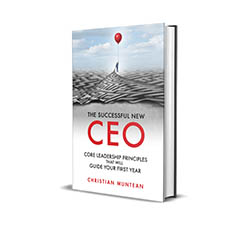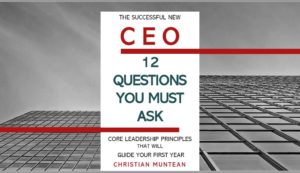Don’t step on your own foot! How your hiring practices hurt you.

A month or so ago, I was practicing take-downs in Brazilian Jiu-Jitsu. I felt relaxed. I like take-downs and looked forward to refining my technique.
As I turned to face my partner, I miss-stepped. I rolled my toes forward and somehow stepped on my own foot. I didn’t know I could do that. The result: A mild sprain.
A ridiculous accident. It didn’t take me out of the game. But it slowed me down.
Organizations are stepping on their own feet through their hiring processes.
It’s a common complaint: The struggle to find employees. At all levels, acceptable quality employees are hard to find. Never mind finding a good one.
Some organizations should have it easier. These workplaces enjoy an abundance of quality applicants. I call these, “Magnetic Organizations.” They are able to attract and retain the best talent.
Normal or “Magnetic”, many organizations step on their own foot. While they have the ability to attract ideal talent, their approach to hiring trips them up. They unnecessarily lose (or frustrate) the very people they hope to hire. They attract the kind of employees that don’t serve them well.
A Case Study
I’m familiar with an organization that has many “magnetic” qualities. They have a positive national reputation. They attract high performers.
Unfortunately, their hiring practices work against them. While they attract ideal candidates, they actually hire and retain a higher level of mediocre to average employees than necessary.
They are stepping on their own foot.
Here’s an example of what this looks like:
Two ideal candidates for employment applied for positions. Neither heard back from HR for months.
While one was waiting, she expanded her job search to another community. Her qualities were immediately recognized. She was offered a great position elsewhere. By the time she heard back from her initial application, months later, she had committed to the move.
It didn’t take long for her to move into an executive role.
When the other heard back, she was low-balled an offer far beneath her qualifications. So, she also applied elsewhere. She quickly received (and considered) an offer from another organization. It paid less, but they recognized and wanted what she offered.
I happened to be in conversations with directors at the first organization. I knew they needed to fill positions. So, I put in a word for this candidate. The director intervened in the HR process. The individual was hired into an appropriate level position and compensation.
In both instances, the problem was their hiring process. In their case, their HR department. They were stepping on their own foot. They lost one ideal candidate and nearly lost a second.
Ideal candidates have options. Don’t expect them to wait around for you. They can, and will, go elsewhere.
Recover the plot – People are strategy
I worked with a client on a culture change process once. The top three levels of management were involved. Within months, customer reviews, morale, and profitability all improved.
Except in their most public-facing department. As we explored this, we realized that their HR team hadn’t been involved in the culture change process. The new initiatives hadn’t been translated into the hiring and onboarding for that department.
The organization was, accidentally, stepping on its foot in how it hired.
They made changes. Soon, they engaged HR with the full process. Within the year, they were recognized as industry leaders.
Get the cart back behind the horse: The process should serve the purpose
Over time, organizations develop HR processes and systems. Some are formed by compliance needs. Some by preferences of HR employees. Some by templates and habits that people believe they need to follow.
These processes develop their own energy and momentum. Soon, these processes start to inform strategy more than strategy informs them.
Organizational functions exist to serve a purpose. The purpose should never be asked to serve the functions.
Position for the Crème de la crème – not bottom of the barrel
Most employee and hiring studies focus on “average” employees. Many compliance requirements and policies are developed to address or prevent employee issues. Attention is paid to average or low performance.
There is little effort or intentionality around high performance. It’s not understood well. Systems aren’t designed for it.
Hiring processes should use language and be designed to attract ideal employees.
In tight or competitive hiring conditions, raise the bar. Lowering it only ensures that ideal employees, with options, will be less attracted to you. Raising the bar helps you pull ideal, great fit employees out of the woodwork.
Compensation matters – but not as much as you think
Compensation is a hot and political topic. Certain talking points play well for politicians and article clickbait. But they don’t match up with actual employee behavior.
Research findings are consistent. For ideal employees, the top 20%, compensation is not the primary driver or expectation. Ideal employees are more interested in things like workplace culture, sense of feeling respected and appreciated, feeling challenged, being able to grow, quality of relationships with management and colleagues, and so on.
For low to average performers, compensation matters more. But even for most of them, it isn’t the most important concern.
For many people, this is counterintuitive. But study after study supports this statement: Compensation matters – but not as much as you think.
Ideal employees, often understand their value and are aware of their options. So, compensate fairly and competitively.
But don’t try to make up for other shortcomings via compensation. You’ll only attract mercenaries. Instead, become a better place to work.
Summary
I was taking a walk a few weeks ago. My foot hurt and I couldn’t figure out why. Eventually, I remembered that I had stepped on it.
Stepping on my foot was such an unlikely way to injure myself that I forgot that I did it. I felt the effect but had disconnected it from the cause.
Many organizations feel the effect of being inadequately staffed. Not many recognize what might be part of the cause.
Trust me, you don’t want to step on your foot. And many organizations are.
Take good care,
Christian

𝗧𝗵𝗲 𝗕𝗲𝘀𝘁 𝗧𝗶𝗺𝗲 𝘁𝗼 𝗖𝗿𝗲𝗮𝘁𝗲 𝗔𝗻 𝗘𝗺𝗲𝗿𝗴𝗲𝗻𝗰𝘆 𝗦𝘂𝗰𝗰𝗲𝘀𝘀𝗶𝗼𝗻 𝗣𝗹𝗮𝗻 𝗶𝘀 𝘽𝙚𝙛𝙤𝙧𝙚 𝗬𝗼𝘂 𝗡𝗲𝗲𝗱 𝗜𝘁.
Be prepared for a smooth transition in the event of an unplanned emergency succession. My guide will show you step-by-step how to devise your own plan.
Free Leadership Resources
Whether you are a new CEO, thinking of succession or exit, or wanting to strengthen your leadership and your team, I’ve got resources to help:
Enhancing your leadership skills
Are you interested in learning more about becoming a successful CEO? If so, get a free copy of my book The Successful New CEO. Not a new CEO? I’ve been told by “old hands” that they felt any CEO should read this. So, click here to get your copy today.
by “old hands” that they felt any CEO should read this. So, click here to get your copy today.
Let’s connect.
I’m passionate about helping leaders to create workplaces they love going to and increasing the value of the services they offer. My results-oriented approach is tailored to each client’s specific situation and needs. As a leadership coach, I have developed a wealth of resources to help you and your team grow and become stronger.
Weekly Newsletter – sign up to receive my weekly articles addressing critical leadership challenges and issues.
The Leadership Coach Podcast – In my podcast, we explore effective, high-impact, and enjoyable leadership. Subscribe.
There are 𝟭𝟮 𝗰𝗿𝗶𝘁𝗶𝗰𝗮𝗹 𝗾𝘂𝗲𝘀𝘁𝗶𝗼𝗻𝘀 to ask before accepting a new CEO position. Do you know what they are? Instantly download my free e-book here.
Find the value of your company with my free assessment tool: The Value Builder System
The Value Builder System™ is a 13-minute online questionnaire that evaluates your business on the eight factors that contribute more to its attractiveness and value. These factors are scored on a scale of 1-100. Businesses that score over 80 are likely to command 70%-100% higher value than others.
Opportunities
Executive and Leadership Coaching: Do you feel overwhelmed? Are you not getting the results you expect from the effort you are putting in? Do you find yourself facing similar challenges time and time again? Would you like to change specific ways of relating or reacting? If you would like to experience predictable, measurable growth Contact me.
Profitable Exit Strategy Workshop: Are you a business owner or partner? Over 55? Starting to think about exiting your business or active management in the next 3-5 years?
- Curious about what your business might be worth?
- Would you like to discover the specific steps you need to take to increase its value and become highly attractive to a buyer?
- Are you planning on handing it over to family or employees and you want to ensure long-term success?
If so, contact me now
Article Categories
Popular articles

Download my free 10-page eBook:
How To Accomplish More Without Doing More:
Eight Proven Strategies To Change Your Life
Discover how to save eight hours during your workweek-even if you're too busy to even think about it. The resource every maxed out executive needs.

